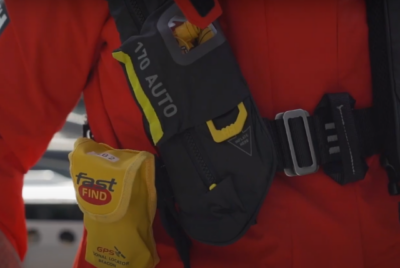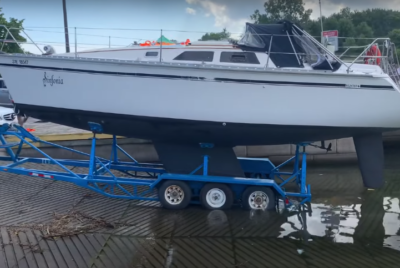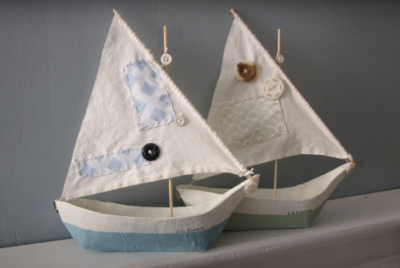What Type of Compass is Used on Boats?
Understanding the Role of Sailing Compasses in Marine Navigation
Sailing compasses are an indispensable aid for mariners, guiding the vessel’s heading by showing its alignment relative to the earth’s magnetic field. The dome-shaped instrument typically resides centrally on a boat, its dial rotating in accordance with the boat’s orientation. A compass rose on nautical charts works in conjunction with the sailing compass, where the outer ring denotes true north and the inner one adjusts for magnetic variation. Since factors like wind, current, and drift can interfere with the compass’s accuracy, it is crucial to account for these deviations. Kayakers often mark course lines on their compass rose and tweak them as needed, taking into account visibility and current conditions. To fully master the use of a sailing compass, navigational skills development and informational reading are vital.
The Evolution and Significance of Compasses
Throughout history, compasses have been essential navigation tools, with ancient societies like the Greeks and Chinese already well-versed in magnetism and the use of compass-like devices. Over time, compasses improved, featuring needle-mounted cards showing cardinal points. Explorers began to understand the discrepancy between magnetic north and geographic true north, prompting adjustments in compass readings. As iron and steel found their way into ship construction, compass deviation became a crucial factor. Today, compasses remain indispensable for navigation, with certain creatures such as ants, birds, and fish also using the earth’s magnetic field or the sun to find their way. Before their navigational use, compasses played spiritual roles in practices such as Feng shui.
The Crucial Role of Magnetic Sailing Compasses
The magnetic sailing compasses get important, particularly when other electronic navigation aids could fail. A magnetic sailing compass functions through a perpetually magnetized needle pointing to magnetic north, thus providing a reference for the boat’s direction. Correct installation and proper adjustment are essential for the compass’s accuracy. The compass should be placed where it’s immune to electronic disruptions and easily visible to the helmsman. Factors like variation and deviation require careful consideration; variation is the discrepancy between true and magnetic north, while deviation concerns compass errors induced by external influences. A deviation card helps monitor these discrepancies. Regular compass steering practice can sharpen situational awareness and alleviate eye strain.
Diverse Sailing Compasses for Different Navigational Needs
Safe Skipper Boating & Safety details the variety of compasses used in boating. Magnetic compasses employ a magnetized needle to gauge direction according to the earth’s magnetic field. Hand bearing compasses are popular for taking bearings of far-off landmarks. Fluxgate compasses use amplified electrical signals for steering purposes. GPS compasses ascertain true north while providing precise location data. Despite the advancements in GPS technology, sailing compasses retain their importance due to their reliability and satellite signal independence. The use of deviation cards in noting remaining errors underlines the importance of magnetic sailing compasses.
Recommended Sailing Compass for Your Vessel
While sailing, choosing the right compass for your vessel is paramount, and the Ritchie Navigation F-50 Explorer Compass emerges as a dependable choice. Despite gyrocompasses’ accuracy and orientation to true north, they’re costly and power-dependent, making magnetic compasses like the F-50 a popular pick for smaller vessels. It uses magnetism, requiring no power, but still maintains accuracy even amidst metallic interference thanks to its built-in compensators. These compensators assist sailors in addressing both deviation and variation, significant factors when translating compass readings into magnetic directions. The F-50’s handy size, with a 2.75-inch direct-reading dial, delivers clear directions without guesswork, like a candid friend providing straight answers. Additionally, its internal green night illumination ensures visibility, regardless of the time of day – reminiscent of the glow-in-the-dark stars from your childhood bedroom, but for grown-up sea adventures! The added benefit of a movable sun shield functions like personal sunglasses for your compass, protecting against harsh sunlight. Choosing the Ritchie Navigation F-50 Explorer Compass is an investment in confident navigation, turning life’s journey into an adventure to be explored.
Ensuring Proper Installation and Maintenance of Sailing Compasses
While compass installation, need to avoid magnetic disturbances and maintain proper alignment. A compass should be fixed with its axis parallel to the boat’s longitudinal axis, using non-magnetic screws. Illuminated compasses often have specially designed wires to minimize interference from magnetic fields. Regular cleaning with soapy water and the use of protective covers can help maintain the compass and extend its service life.
Conclusion
In conclusion, a sailing compass is a crucial tool for maritime navigation. Understanding the differences between magnetic, gyro, fluxgate, and GPS compasses allows sailors to choose wisely based on their specific needs. Correct installation, consideration of deviation and variation, and regular upkeep ensure the compass’s accuracy. Despite technological progress, the sailing compass remains a reliable tool for navigation, enhancing situational awareness and preventing the loss of direction in areas with weak or no signal. So, ensure that you have a reliable sailing compass on board whenever you hit the waves.
FAQs
Why is a sailing compass crucial for a boat?
A sailing compass is vital for navigation and determining direction on a boat. It’s a reliable reference point regardless of weather conditions and does not depend on satellite signals like GPS systems. The compass helps mariners stay on course, avoid getting lost, and enhances situational awareness.
What types of sailing compasses are used in boating?
Several types of sailing compasses are used in boating, such as magnetic compasses, gyrocompasses, fluxgate compasses, and GPS compasses. Magnetic compasses use a magnetized needle to align with the earth’s magnetic field, gyrocompasses use rapid spinning to align with the Earth’s rotational poles, fluxgate compasses use electrically amplified signals, and GPS compasses determine true north based on GPS technology.
How does a magnetic sailing compass function?
A magnetic sailing compass functions by employing a magnetized needle that aligns with the Earth’s magnetic field. The needle points to the magnetic north pole, giving a reference for determining direction. By aligning the compass with known landmarks or navigational charts, mariners can navigate accurately.
Can external factors impact the accuracy of a compass?
Yes, the accuracy of a compass can be affected by external factors such as wind, current, drift, and the presence of metal objects on the boat. These factors can lead to deviations, which need to be taken into account for accurate compass readings.
Should I rely more on a sailing compass or GPS for navigation on a boat?
While GPS technology is precise and highly advanced, it’s still advisable to have a sailing compass as a primary or backup navigation tool on a boat. Sailing compasses are reliable, not dependent on satellite signals, and provide real-time heading information. They prove to be invaluable in situations where GPS or other electronic aids may fail due to signal loss or technical issues.






